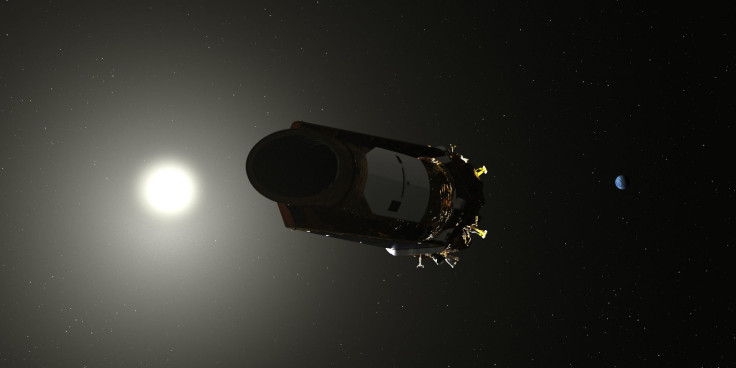NASA’s Kepler Space Telescope Nearing Its End, But No Warning Signs Yet

Filling up the gas tank of your vehicle is one of those things that is sort of difficult to do when you are in space. Short of a refueling mission sent from Earth, and the necessary onboard mechanism for the fuel transfer, there is pretty much no other way to do that for a spacecraft.
NASA’s Kepler space telescope, orbiting the sun from a distance of 94 million miles away from Earth, is now running low, the space agency said in a statement Wednesday. Once it has used up all of its remaining fuel, it would still stay in orbit (an addition to the ever-growing amount of space junk) but lose the ability to maneuver itself and shift its field of view, effectively ending its life.
Exactly how much longer the spacecraft’s fuel will last is not known, with NASA only saying: “Our current estimates are that Kepler’s tank will run dry within several months — but we’ve been surprised by its performance before! So, while we anticipate flight operations ending soon, we are prepared to continue as long as the fuel allows.”
The loss of fuel to its thrusters would also mean the telescope won’t be able to aim at Earth for transferring the data it collects. Therefore, the Kepler team plans to collect and downlink as much data as it possibly can before the unspecified time of the spacecraft’s demise. There is no fuel gauge to look at, and Kepler has not displayed any warning signs — like a drop in the performance of the thrusters — yet either.
Kepler was launched in 2009 with about 3 gallons of fuel, and that gave the spacecraft an approximate fly-life of about 10 years.
Depending on the nature of the mission, some reserve fuel is sometimes left in the spacecraft for its final maneuver, like in the case of Cassini, which was sent hurtling into Saturn’s atmosphere, lest it contaminate a potentially life-supporting environment on the gas giant’s moons, Enceladus and Titan. Spacecraft orbiting Earth need to make sure they don’t hit each other or simply fall to Earth (like China’s Tiangong-1, which is expected to crash to the surface in 2-3 weeks, but not due to lack of fuel).
But Kepler, given its isolated spot far from Earth, has no such concerns, and NASA scientists plan to use all its fuel to gather and transfer as much science data as possible, according to the statement.
Kepler is already living an extended life, after its primary exoplanet-hunting mission ended abruptly in 2013. The spacecraft was launched in 2009, but four years later, it malfunctioned following the breaking of a wheel that prevented the telescope from maintaining its original field of view. Scientists managed to fix it up in 2014, starting its “K2” mission that requires the spacecraft to change its field of view to different parts of the sky, once every three months.
In the 9 years it has been around, Kepler is responsible for the discovery of many of the about 3,600 exoplanets we know so far that exist in our galaxy, the Milky Way. On April 16, NASA will launch the Transiting Exoplanet Survey Satellite mission, and its data would likely show us many more planets that lie beyond the solar system.
© Copyright IBTimes 2025. All rights reserved.



















